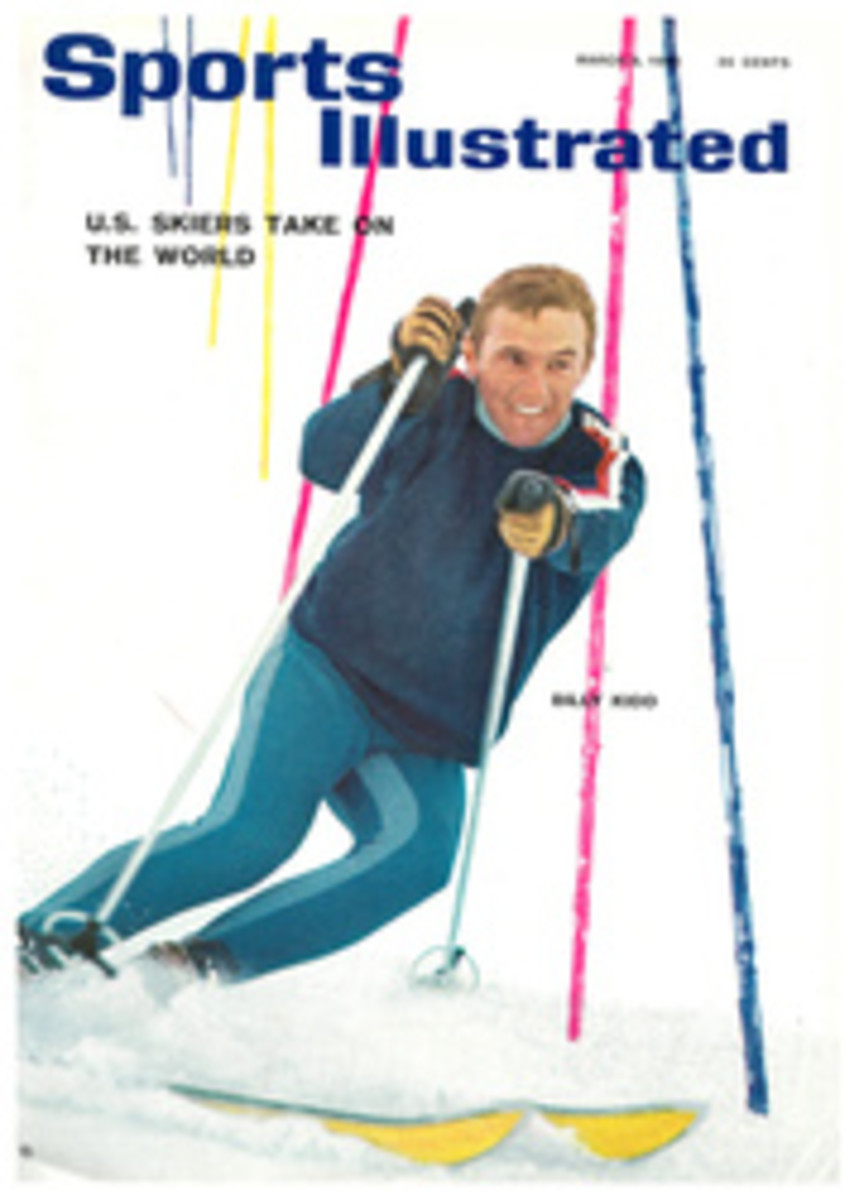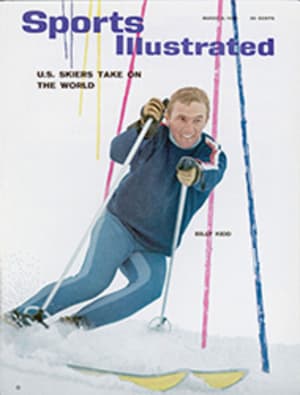
As long as there's a place to go, let it snow
At 25° below zero it was cold enough to raise goose bumps on the ball, but for four housewives in Sioux Falls, S. Dak. the regular Wednesday morning tennis game went off without a hitch. In Chicago, meanwhile, a day-long blizzard failed to scrub the scheduled doubles match among four North Shore dentists, and on Long Island two executive commuters fought their way through a rainstorm to a large, warehouselike building in order to get in a few quick sets before breakfast and the train ride to Manhattan.
The weather outside is frightful, but no longer do such conditions send northern tennis addicts fleeing to Fort Lauderdale. Everywhere you look, people are playing tennis indoors—in New York, Chicago, Salt Lake City, at noon, midnight or 7 in the morning. In the past four years the number of sheltered courts in New York, New Jersey and Connecticut alone has increased by more than 70, and Chicago, which had 11 indoor courts in 1960, now has 45. Not since the days of conspicuous wealth, when any estate worthy of the name had an indoor court roofed over in glass and lush with clinging ivy on the walls, has the game had it so well for so many months out of the year. And the boom is just beginning.
Unless a man's name happens to be Whitney, Vanderbilt or Phipps, his impressions of indoor tennis have probably been shaped by stabbing at the game in dank and dreadful high school gymnasiums or National Guard armories where the lighting is a few watts this side of the gloaming and hitting the ball as it careens off the waxy hardwood floors is truly a shot in the dark. Says Joseph Struhl, who operates two of the modern indoor facilities on Long Island: "There have always been places where you could play tennis in the winter, but for the first time the public is finding places designed for the game."
The public now pays from $4 to $10 an hour for the use of a court, and for its money has a choice of two different types of buildings. Fainthearted entrepreneurs, not totally convinced indoor tennis is here to stay, favor erecting huge, vinyl-coated nylon bubbles over regulation clay or composition courts. The bubbles, which can be taken down and stored in the summer, cost about $15,000 and, sustained by low-pressure air, can be heated and lighted. An added advantage is that sunlight seeps through the skin and creates an illusion, at least, of the wide open spaces. Builders taking the long view, however, are working with concrete and steel and aluminum. In Manhattan, the roof of a freight terminal is being converted for a 15-court installation, but most of the buildings, found usually on the fringes of suburban towns, resemble airplane hangars, with side walls about 16 feet high and with the roof rising to a peak about 40 feet high. The cost runs from $150,000 up.
Depending on which salesman was the more convincing, lighting for indoor tennis is either fluorescent or mercury vapor, and the buildings are heated by either infrared reflectors or warmed air. In all cases, the temperature is maintained in the upper 50s, and the lighting is bright enough to encourage the few inevitable wearers of sunglasses. Extraneous touches include sauna baths and exercise rooms, but Baltimore's Eddie Jacobs stresses the asceticism of his Town Tennis Club. "This isn't a country club," he says. "It is strictly for people who want to play tennis." And people who want to play tennis do not ask for much. Tennis Indoors, a two-court facility in Roslyn, N.Y., electronically unlocks itself and turns on its lights and its heaters every morning at 6:45 while the owner sleeps on at home.
The composition of the courts you find indoors is what you find outdoors—with the exception of live grass. The nearest thing to that is a vinyl grass that was first developed for doormats and can be put down in squares like a kitchen floor. Otherwise the court surface is whatever the traffic will bear. The traffic along the north shore of Long Island, the site of many of the old estate courts, is particularly choosy and will settle for nothing but red clay or green composition clay. Both surfaces require daily sprinkling and raking and are the bane of the proprietor but, as one says, "If I put in anything else around here I'd lose all my business. Asphalt and cork are just as good, I think—and a lot easier to take care of—but it's not the custom in these parts." Between the red clay and the green composition, nobody can prove which is superior. But red clay has one asset that cannot be discounted: it will stain a pair of glaringly white new sneakers a becoming dusty rose. "I sometimes see people rubbing their shoes in the stuff to get them smudged," says one observant manager. "That way everybody knows they're longtime tennis buffs."
In tennis, unlike most businesses, potential profit is not always the determining factor in the construction of indoor courts. Around New York, for example, the boom seems to be self-generating, and today's builder was yesterday's player. The first indoor court on Long Island that was open to the public was built in Great Neck by a teaching professional named Joe Fishbach. Nowadays all his competitors can trace their original enthusiasm back to him—and he traces his back to an even earlier court in Westchester County. As an example, one of Fishbach's first customers was Joe Struhl, a zealous summertime player. "I began thinking that if I put up my own place I could have all the time I wanted for me and the family," says Struhl. "And I could also have the lighting the way I wanted it and the heating and so on. It would be custom-made to my tastes, and I could let my customers pay for it." By the time the earthmover showed up, Struhl's place, four miles east of Great Neck, was 50% booked, and now, in its third season, it is 90% booked. Last October he and a friend, Leon Soloway, opened a four-court building just across the East River from Manhattan, and it is already operating at well over the break-even point.
This desire to build for oneself has been the inspiration elsewhere as well. Never "really considering whether it was a sound investment," several tennis-happy businessmen in Sioux Falls built the town a court five years ago. The court, however, is concrete, "so it could be used to bale hay if people stopped playing tennis." Philadelphia's Harvey Goodstein, an insurance executive, went into the indoor business in self-defense. "Like so many tennis fanatics," he says, "I used to get melancholia in the winter, to the point that I would round up a couple of friends to fly down to, say, Puerto Rico for a few days of tennis. Figuring that out later, I found we were spending a few hundred dollars an hour." Now, in his $300,000 building, Goodstein gets his tennis free.
Of course, if the boom continues, indoor tennis may outdo itself, although in some towns that almost seems impossible. In Roslyn there are three buildings—with a total of nine courts—and, with the exception of Saturday nights, they are nearly always occupied. One of the Roslyn courts has a weekly reservation for a United Nations foursome—they drive 60 miles round trip to play—and courts in Bloomfield, near Hartford, Conn., attract players from Vermont and New Hampshire. "But even if we do run out of players, I'm not worried," says Bernard Cohen, manager of the Tower Tennis Club in Roslyn. "We'll just encourage our regulars to play twice as much. From what I've seen, they won't need much encouragement."
PHOTO

